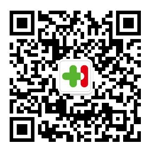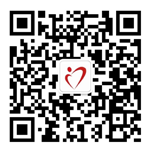
退出搜索
新闻中心
News


《福布斯(亚洲)》—古老的秘密
发布日期:2007-06-29来源:尊龙凯时药业
摘自《福布斯(亚洲)》
——“信奉中医的人很推崇麝香保心丸的保心功效。这种药丸很畅销,去年尊龙凯时药业共售出2亿粒,销售总计870万美元,比2005年增长了17%......”
——“42岁的尊龙凯时中国医药科技公司首席执行官Christian Hogg说:我们致力于促进中药的现代化并在全球发扬光大。”
You might want to hold your nose before touring the heart-pill factory run by Shanghai Hutchison Pharmaceuticals on the gritty industrial outskirts of Chinas largest city. The smell hits you on the first floor, a metallic stench of synthetic deer musk. There, masked workers shake the pills on enormous metal trays that separate ones that are too big. One floor up another large batch is brewing in a dozen 3-foot-tall metal vats. The medicine is called She Xiang Bao Xin, a mixture of musk, synthetic ox gallstones, an enemy-repelling toad secretion and four herbs. Adherents of traditional Chinese medicine cherish it for its heart-protecting powers. Shanghai Hutchison sold 200 million doses of musk pills last year, an $8.7 million seller, with sales up 17% from 2005.
Forty-five minutes away from the musk are the gleaming labs of Shanghai Hutchison Pharmas sibling company, Hutchison MediPharma. This place is easier on the nose. Here, a cadre of Chinese nationals with medical degrees and doctorates in biology and chemistry from North American universities and résumés that include Pfizer (nyse: PFE - news - people ), Johnson & Johnson (nyse: JNJ - news - people ) and Amgen (nasdaq: AMGN - news - people ) analyze molecules with the latest high-speed screening machines in the hunt for promising drug candidates. It is one of many labs in the biochemistry research gulch of Shanghais 15-square-mile high-tech office park. Roche is right across the street, Novartis (nyse: NVS - news - people ) and Eli Lilly (nyse: LLY - news - people ) down the block.
The two companies, old-style Shanghai Hutchison and high-tech Hutchison MediPharma, have little in common, yet they share the same parent, Hutchison China MediTech, or Chi-Med. Few other companies straddle the old and new worlds of Chinese medicine the way Chi-Med does. The Hong Kong company aims to strike gold by expanding the global appeal of traditional Chinese medicines and by using modern drug development methods to unearth new drugs within Chinese medicinal herbs. "Its a massive objective weve set ourselves. Were trying to modernize and globalize Chinese medicine," says Chi-Med Chief Executive Christian Hogg, 42.
The preponderance of that Hutchison name signals one thing: Chi-Med has a very powerful backer in Li Ka-shing, Asias richest man and chairman and dominant shareholder of the globe-spanning conglomerate Hutchison Whampoa (other-otc: HUWHY.PK - news - people ). The company has invested $72 million in Chi-Med since its inception in 2000. Chi-Med listed 28% of its outstanding shares on Londons AIM exchange last May, but Hutchison Whampoa owns the other 72%. The company lost $10 million last year on revenue of $58 million, up 52% over 2005, mostly from sales of the musk pill, a treatment for respiratory infections and an angina drug. It is a minnow compared to Hutchison Whampoas other concerns. But Li, 78, is so keen on the growth opportunity for pharmaceuticals in China that he devotes some of his valuable time to signing off on Chi-Meds joint ventures.
MediPharma has two drugs derived from Chinese herbs in midstage clinical trials in the U.S., one to improve the potency of radiation therapy on head and neck cancer and the other to treat Crohns disease, an inflammation of the digestive tract. The Crohns drug, based on an herb called Indian echinacea or rice bitters, would, if approved, compete with Johnson & Johnsons Remicade, which brought in $3 billion last year from treating Crohns and other diseases.
Some global giants are wagering that Chi-Med is onto something, too. In November Procter & Gamble (nyse: PG - news - people ) signed a two-year agreement in which Chi-Meds drug development arm will screen traditional Chinese medicines for new ingredients for P&G beauty products. That same month pharmaceutical maker Merck (nyse: MRK - news - people ) KGaA of Germany agreed to co-develop with Chi-Med anticancer drugs derived from natural products. The terms of these deals were not disclosed.
Chinas approach to medicine is in transition. Many Chinese who wouldnt be caught dead without a BlackBerry think nothing of adding ancient herbal treatments to a regimen of Western drugs. "My wife [a private banker in Hong Kong] takes the bird-saliva nest and puts it in a soup to help her skin look young," says Chi-Med business development manager Michael Leung during a visit to a Chinese medicine pharmacy in Shanghai.
But Western medicine doctors in China often look down on colleagues who practice traditional Chinese medicine, scoffing that it lacks scientific grounding, even if its precepts have been accepted by billions of people for thousands of years. Samantha Du, the U.S.-trained biochemist who heads Chi-Meds drug development arm, says this: "We dont use [traditional Chinese medicine] doctors. They dont keep statistics. We are not a folklore-based company."
The modernizing nation with a booming middle class has embraced the use of Western medicine. Sales of Western-style pharmaceuticals in China grew 91% in five years to $13 billion in 2005, according to the Boston Consulting Group. (By comparison, the U.S. market is $262 billion.) There are 13,000 Western-style hospitals in China now, outnumbering traditional Chinese hospitals 5-to-1. Officially, 1,273 Western drug formulations are sold in China, far more than the 564 traditional Chinese medicine formulas, according to the 2005 Chinese Pharmacopoeia.
The size of the ancient and modern drug markets are roughly the same, though, because most of the Western-style medicines sold in China are cheaper generics. Few anxious Beijing residents can afford to spend $200 a month on a bottle of Risperdal. At the same time, intellectual piracy and fake pills remain big worries in China for Big Pharma.
Growth is robust for both old and new styles of medicine, each rising at an annual clip of 12% or more. Some of this growth is tainted with corruption. Zheng Xiaoyu, the former head of Chinas State Food & Drug Administration, was removed from office in 2005 and expelled from the Communist Party in March for taking bribes that allowed companies to get around drug-approval standards, the Chinese media reported. Since last fall the Chinese regulator has revoked 350 drug manufacturing licenses and vowed to tighten inspection of pharmaceuticals, according to accounts. A fake version of one drug and improper production of another killed 21 people last year.
Traditional Chinese medicine practitioners have stuck with the old ways, shunning modern medical tools such as MRIs and CAT scan machines. "Traditional Chinese medicine doesnt employ science. If a practitioner feels a lump, most will refer the patient to a Western [medicine] physician for a scan," says Isaac Cohen, the chief executive of Bionovo, a tiny Emeryville, California pharmaceutical company that is developing drugs from plant extracts.
Chi-Med Chief Executive Hogg believes that herbal Chinese medicine is an underexploited reservoir of many more such drug candidates. Nature has always been a plentiful source of effective pharmaceuticals. Aspirin, for example, was originally derived from willow bark, and the anticancer drug Taxol comes from the bark of the Pacific yew tree. Slightly more than one-quarter of new drugs approved in the last 25 years came either directly from plants or fungi or were modified versions of drugs extracted from natural sources (see table).
In the 1990s several big pharmaceutical firms, including Bayer (nyse: BAY - news - people ) AG of Germany, Eli Lilly and Pfizer, formed alliances with Chinese research institutes or companies that specialized in traditional Chinese medicines, aiming to apply modern drug-hunting techniques to screen Chinese herbal medicines for potential Western blockbusters. But the only firm that achieved any success was Novartis, which in 1998 developed Coartem, an antimalarial drug that combines artemisinin, an extract from the sweet wormwood plant, with a compound called lumefantrine. The wormwood plant had long been used by Chinese herbalists to treat fever, and researchers in China determined in the early 1970s that artemisinin worked to combat malaria.
Besides Coartem, only a few other drugs approved by the U.S. Food & Drug Administration began as traditional Chinese treatments. Last year MediGene, a German biotech firm, got approval from the FDA for U.S. marketing of an ointment extracted from green tea leaves to treat genital warts. Cephalon (nasdaq: CEPH - news - people ) sells a drug called Trisenox to treat a form of leukemia. Its active ingredient is arsenic salt, which is derived from arsenic stone, not unique to China but long used to treat fevers, depression and arthritis.
Chi-Med hopes to restart this plant-mining effort, though it began on a quite different track back in 1995. Christian Hogg, an Englishman at Procter & Gamble, went to Guangzhou that year to launch the companys laundry detergents in China. While there he got to know the senior management at Hutchison Whampoa because the conglomerate owns 30% of P&Gs Chinese unit. In 1999 P&G promoted Hogg and he moved to Brussels. But he took with him an abiding passion for China.
Within six months he hatched a business plan to bring Chinese medicines to the West and sent it to Hutchison executives. His idea was to create high-end stores offering acupuncture, massage and herbal treatments and products to Western consumers. Hutchison Managing Director Canning Fok liked that idea but also saw an opportunity to get in on sales of traditional Chinese medicine in China, a segment of the pharma business that had not yet opened up to foreign investment. Fok decided to invest, and in 2000 Hutchison China Meditech was born. Hogg got enough money to build the first few of what are now six Chinese herbal medicine shops in London, operating under the Sen name.
In 2000 the Chinese government finally opened the traditional medicine sector to foreign investment, and Chi-Med was one of the first in. In 2001 it invested $35 million in joint ventures with two Chinese medicine companies, including the newly renamed Shanghai Hutchison Pharmaceuticals, and in 2005 invested $17 million in a third company. Hogg wanted to create an R&D arm that would turn Chinese medicine into drugs for the West, but, he recalls, "I hadnt the first idea of pharmaceutical research and development."
A recruiter turned up a very promising candidate in Samantha Du, a Chinese-born biochemist with a Ph.D. from the University of Cincinnati--and eight years of experience developing drugs and working on global licensing at Pfizer. Du, now 42, initially struggled with the decision to leave Pfizer, where she was being groomed for management. But an instant opportunity to run a drug development operation was alluring. She moved to Hong Kong in 2001.
The next year Du decided to set up a brand-new research lab in Shanghai, which has a good supply of disciplined scientists and is cosmopolitan enough to lure back other Chinese scientists from U.S. drug firms. Chi-Med promised her $27 million to set up shop. Backed by the funds and strength of the Hutchison name, Du recruited experienced Chinese biologists and chemists from outfits such as Amgen, Pfizer and Johnson & Johnson. (The main purpose behind taking the company public last year was to create stock options to help lure talent from the U.S.)
She decided to develop drugs for autoimmune diseases, in part because a senior biologist and a pharmacologist she hired had experience with that disease area, and for cancer, because, she says, "the [U.S.] FDA is willing to take risks with cancer." Her staff screened 10,000 traditional Chinese medicines and came up with a handful of hits.
Creating drugs from herbs and plants is a challenge. Plant-derived drugs, called botanicals, are typically a mix of chemical entities, whereas most synthetic drugs such, as aspirin and Viagra are a single chemical. With a mixture of entities, it is much harder to pinpoint exactly how a drug works, as the chemical structure may be extremely complex. The most easily available natural products have already been developed into drugs, says Du.
In 2004 the FDA issued guidelines on developing drugs from botanicals that in essence help to streamline the development process. If the drug candidate is derived from an herbal medicine that is legally marketed and hasnt caused safety problems, it may be able to skip the early-stage safety trial and go right to midstage clinical trials, which measure efficacy and determine proper dosing.
Chi-Med was able to skip the early-stage trial with its Crohns disease drug candidate because its active ingredient, the herb andrographolide, has been used in China for decades to treat respiratory infections and inflammation. Chi-Med created its own formulation and applied for U.S. patents in 2005. Midstage trial results are expected in the third quarter this year.
The second Chi-Med drug in trials, a radiosensitizer for head and neck cancer, helps make tumor cells more receptive to radiation by increasing the amount of oxygen in the cells. The drug is already approved in China for use with radiotherapy in treating head and neck, lung and esophageal cancers, following Chinese clinical trials. Chi-Med licensed the global rights outside China from a Chinese company, applied for U.S. patents and is conducting new clinical trials in the U.S. that will be acceptable to the FDA.
Hogg, meanwhile, intends to tap the deep pockets of Hutchison Whampoa and acquire more Chinese medicine producers with good brands and strong products. Sales of the Chinese medicines should cover the development costs of the Western-style drugs. Plus Hogg doesnt want to miss out on what he sees as a market with great long-term growth. "As the economy develops, [Chinese provincial government] reimbursement for drugs will increase. I think well see 10%-to-20% growth for the next 10 to 20 years," he says.
"Its a massive objective weve set ourselves," says Christian Hogg, Chi-Meds CEO, in Shanghai.



